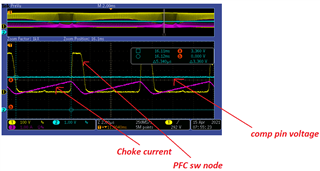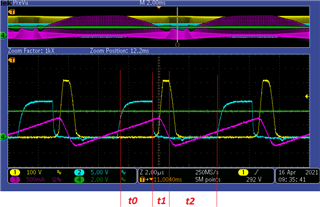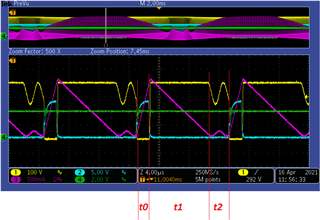Hi,
I have a follow up question to the previous Ton time calculation question asked a few days ago. Specifically the maximum on time for a certain gff.
For example at 230 Vrms. Gff is then the sixth selector, which equals 0.158. What I then do not understand is how the maximum on-time can be 5.26 us? To me the only way this can be is if dondch is < 1.
If I understood this correctly I then can't understand the measurement I have done below;
In the measurement snapshot a few cycles can be seen at 230Vrms at the bottom of the input voltage (~180 deg). The on time is close to the maximum specified of the datasheet (~5.28 us). But I do not understand how this is made in the calculation of the on-time.
Here ton = 5us, toff = 900 ns and Tdcm = 0. Which gives dondch = 1. How can the on-time then be more than gff(6)*Tonmax0 = 13.2*0.158 = 2 us?
And for this specific case if I also plug in the comp pin voltage in the equation the calculated on-time should be according to the equation below;

Vco = 3.36 V, Vcomax = 5.7 V, gff = 0.158, Tonmax0 = 13.2 us, dondch = 1 -> Ton = 1.23 us





